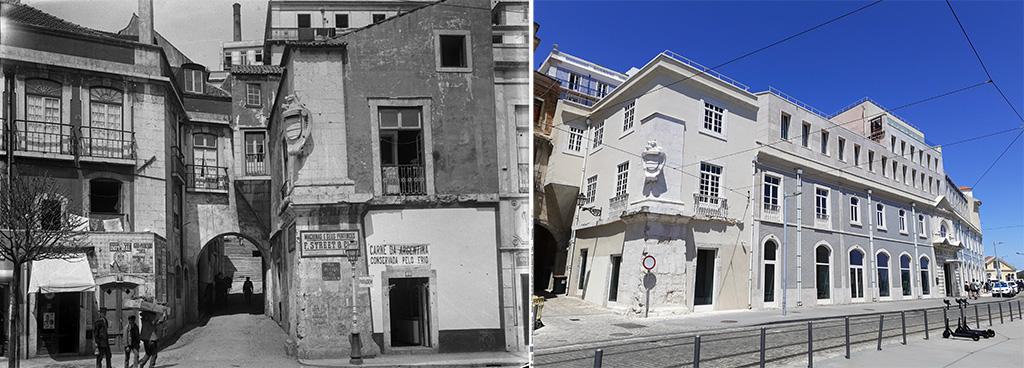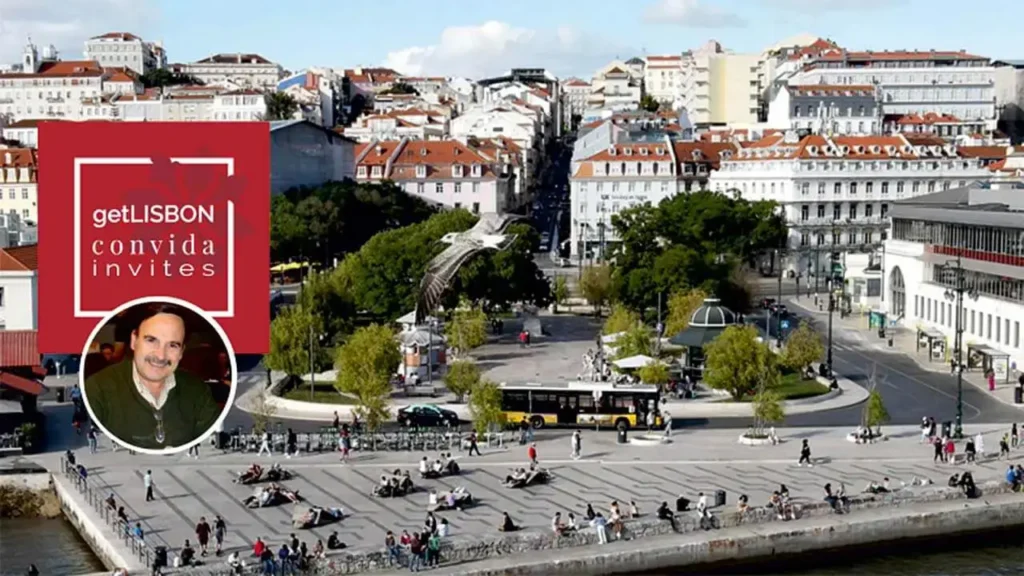In this getLISBON invite series we’re pleased to share the contribution of two archaeologists, Raquel Policarpo and Inês Ribeiro, authors of the book Segredos de Lisboa (Secrets of Lisbon). In this article they’re revealing to us a surprising museum, the Áurea Museum Hotel, a unique space where you’ll find millennia of History and “marks left by the people who lived and passed through this place”.
In a Lisbon of many centuries, is slowly “repopulating” itself with visitors and tourists, a place still less known awaits the visit of all those who wish to discover the past and the archaeological heritage of our city. Anyone who enters Áurea Museum Hotel these days probably doesn´t imagine what they will find inside it, the millennia of history and the marks left by the people who lived and passed through this place.
The Archaeological Secrets of the Áurea Museum Hotel
The Phoenicians
2600 years ago, the Tagus estuary became a busy commercial route, supplied by the minning of metals and driven by the arrival of the Phoenician people. In the 6th century BCE (Before the Common Era), in a beach area that is now far from the river, a small trading post equipped with a ramp and warehouses worked as starting point of maritime routes that connected the Iberian Peninsula with the Mediterranean.
Years later this complex was adapted for housing, an indication that some of its inhabitants settled here and turned the post into a home. These structures tell an important story of how Lisbon is like a patchwork made of many squares. But the most important piece of this period almost went unnoticed after spending the last few hundred years as part of a Roman wall!

The Phoenician stele, the icon of the Archaeological Exhibiton of the Áurea Museum Hotel, is the oldest inscription of the Portuguese territory. It is also the only trace of the lives of two men, Wadbar and Ibadar, and of a time when indigenous populations began to assimilate the Phoenician language and culture, making this a unique epigraph of enormous importance to the history of Lisbon.
Felicitas Iulia Olisipo
The arrival of the Romans transformed this town into Felicitas Iulia Olisipo, a dynamic port and a cosmopolitan city full of buildings that provided its inhabitants with the best of what Rome had to offer.
In an area close to the port and all its activity, a wealthy family built a sumptuous domus. This large family house that stood directly over the Tagus River was decorated with beautiful paintings and mosaics, of which only a small part has made it until today.

In the archaeological area of the ground floor it’s possible to see the tablinum of this domus, its mosaic and decoration. The only complete mosaic in the city of Lisbon combines floral and geometric motifs and attests to the connection of this family to maritime voyages through the central figure of the goddess Venus who, wearing a sandal supported by what is likely to be an oar, assumes the role of Venus Euploia, protector of travellers and idolised throughout the empire.

The Roman house was one of the findings of the excavation carried out in 2004. Used as a trading post during the 20th century, the Sommer Warehouses were deactivated in the 70s and the space left abandoned until the archaeological interventions were carried out in 1997, 2004 and 2005. The archaeological structures and pieces which make up the museum today are the result of these investigations and the complete excavation of the building, which began in 2014, as part of the project to turn the palace into a hotel.
Roman Wall
Telling the story of the Roman presence in Portugal is also talking about its decline and the changes caused by the arrival of the Germanic people. The news of the advance of Vandals, Suevi and Visigoths into the borders of the Roman world led many cities of the Iberian Peninsula to build defences which were unnecessary until then.
From the year 350, cities like Conimbriga and Olisipo surrounded themselves with strong walls that combined the best of Roman engineering with the Romans’ famous ability to adapt to different settings. In addition to the rugged terrain for which Lisbon is famous, the makers of the Roman wall of Olisipo were also forced to solve the problem of building a large structure in the middle of a densely occupied city. They did it in the most pragmatic way, demolishing or swallowing the structures that stood in their way, and both solutions can be seen in the preserved wall inside the Hotel.
More than being preserved, the Roman wall accompanies and surprises guests and visitors during one of the most unsuspected moments of the day, breakfast. The dining room of the hotel features one of the largest sections of this structure preserved in Lisbon, which still displays a proud 8 metres of height, a column reused from another building that was probably dismantled nearby and the original ashlars of a tower that may have been added during the Islamic period.

The archaeological area on the 2nd floor takes us behind the wall and inside the city of Olisipo and shows us the changes that this large structure brought to the streets of the neighbourhood. The importance of water to the population is clearly evident in the well and the fountain pond built during the reorganisation of that area after the wall was built. Even today it’s possible to see the marks of the ropes used to pull the buckets from the well or the hole of the fountain that drained the excess water to the sidewalk and then through the wall to the beach. Circulation was also a priority and led to the construction of a new access ramp to replace the original road that connected the city to the river.

Centuries of History in the Windows of the Áurea Museum Hotel
After the arrival of the Germanic people Olisipo began to change. The streets of Visigothic Olisipona and Islamic Uxbuna lost much of their original layout, adapted to the new Portuguese occupants and even went through a major earthquake until they became the historic centre we know today.
These centuries of evolution are visible in the museum’s showcases, full of pieces that cover the entire history of this site. There is a Neolithic vase found in a burial that is about 7000 years old, objects from the Mediterranean associated with Phoenician and Roman structures, proper kitchen sets from the Islamic and medieval period, and even traces of the destructive fire that followed the earthquake of 1755.

From Palace to Hotel
The rich heritage of this site enabled the creation of a unique and still uncommon project in Portugal, a hotel-museum in which guests and visitors enjoy the Past and the Present at the same time.

This symbiosis is enhanced by the building itself, a historic monument with origins in the Portuguese Expansion and the changes it brought to the riverfront.
Once an area of poor people and fishermen, Ribeira Velha became an elite area in the end of the 15th century. Between Casa dos Bicos and Chafariz d’el Rei, several noble families adapted or destroyed the old structures to build their palaces. The Counts of Linhares were one of these families, and did just that when they built their Renaissance palace, which they later lost in 1640 with the Restoration of Independence. On the corner of the building to Arco de Jesus is still the coat of arms of the new owner, Francisco Mascarenhas, Count of Coculim.

If you think having shops on the ground floors is a modern thing, you couldn’t be more wrong! The Coculim Palace already functioned that way until the earthquake and we can still see one of the pointed arches that supported the shop and a fantastic collection of pipes that survived the tremor and the fires of November 1, 1755.

In fact, commerce was the only occupation of this palace throughout the remainder of the 18th century and until 2018 – and those who wanted to buy the “best cold-preserved Argentine meat” in the beginning of the 20th century only had to call upon what is now one of the hotel’s dining rooms.
Trading post, domus, Islamic quarter, Palace, Hotel. The archaeological exhibition of the Áurea Museum Hotel is, like all of Lisbon, a world of clues and stories left behind for thousands of years. Make sure to visit it and become part of the next paragraph!
Visits take place from Monday to Saturday at 10 am or by appointment (groups). Fore more information please contact: [email protected]
| Never miss another article | Subscribe here |

Raquel Policarpo e Inês Ribeiro
Born in 1984, in Lisbon.
Archaeologists, their paths crossed at the Faculty of Social and Human Sciences of Nova University Lisbon throughout their bachelor and master’s degrees. The friendship continued while their professional paths diverged, with Raquel following the area of Preventive Archaeology as Inês was involved in Research Projects.
In 2011 they ventured on a new project together, Time Travellers, a tourist entertainment agency that promotes Portugal’s historical and archaeological heritage, and in 2016 their passion for Lisbon and the Past led them to write the book «Segredos de Lisboa» (Secrets of Lisbon), a romanticised itinerary to the archaeological sites that could be visited in the city of Lisbon at the time.




